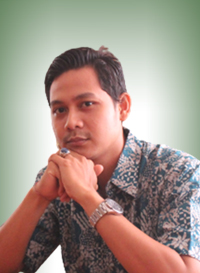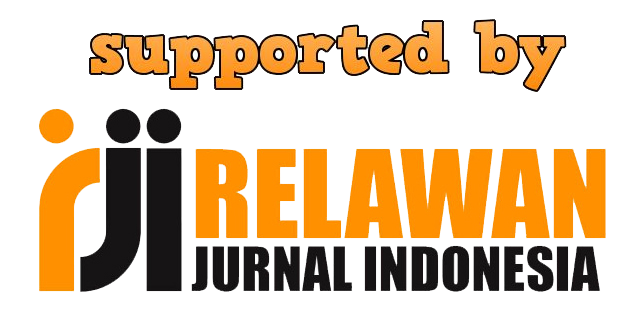Community Livelihood Diversification as a Result of Mining Industry Activities: A Case Study of Soligi Village, South Halmahera
DOI:
https://doi.org/10.23887/jish.v11i1.41106Keywords:
Community Livelihoods, Archipelago, Obi Island, Job Diversification, MiningAbstract
Indonesia is one of the world's largest archipelagic countries. Diversification is the process of increasing household economic income in various sectors to improve welfare and survival opportunities. This study demonstrates that the people of Obi Island's livelihoods are diversifying due to mining and pressure from the immigrant population. This study is necessary to determine how mining depletes natural resources affects the livelihood strategies of the Indonesian archipelagic community, particularly in Maluku. On the other hand, they must contend with dwindling natural resources. This study employed a semi-structured questionnaire to conduct a home survey with 153 respondents in Soligi Village. In-depth interviews were also conducted to delve deeper into the research findings. This study demonstrates that physical capital and natural capital are the essential livelihood assets for the inhabitants of Soligi Village, and mining has resulted in the diversification of people's occupations into non-permanent mining employees.
References
Badjeck, M.-C., Allison, E. H., Halls, A. S., & Dulvy, N. K. (2010). Impacts of climate variability and change on fishery-based livelihoods. Marine Policy, 34(3), 375–383.
Bond, R., & Mukherjee, N. (2002). Livelihood asset status tracking: an impact monitoring tool? Journal of International Development, 14(6), 805–815.
Cahyadi, A., Hidayat, W., & Wulandari, W. (2017). Adaptasi Masyarakat terhadap Keterbatasan Sumberdaya Air di Pulau Pramuka, Kepulauan Seribu, DKI Jakarta. Jurnal Penelitian Kesejahteraan Sosial, 12(2), 207–214.
Chambers, R. (2011). Sustainable livelihood thinking: an approach to poverty, environment and development.
Chua, K. J., Yang, W. M., Er, S. S., & Ho, C. A. (2014). Sustainable energy systems for a remote island community. Applied Energy, 113, 1752–1763.
Cinner, J. E., McClanahan, T. R., MacNeil, M. A., Graham, N. A. J., Daw, T. M., Mukminin, A., Feary, D. A., Rabearisoa, A. L., Wamukota, A., & Jiddawi, N. (2012). Comanagement of coral reef social-ecological systems. Proceedings of the National Academy of Sciences, 109(14), 5219–5222.
Cochran, W. G. (1946). Relative accuracy of systematic and stratified random samples for a certain class of populations. The Annals of Mathematical Statistics, 164–177.
Connell, J. (2013). Islands at risk?: environments, economies and contemporary change. Edward Elgar Publishing.
Dipatunggoro, G. (2011). Survey Tinjau Bahan Galian Nikel Daerah Soligi, Kecamatan Obi Selatan Kabupaten Halmahera Selatan, Maluku Utara. Bulletin of Scientific Contribution, 9(2), 97–107.
Foale, S., Cohen, P., Januchowski Hartley, S., Wenger, A., & Macintyre, M. (2011). Tenure and taboos: origins and implications for fisheries in the Pacific. Fish and Fisheries, 12(4), 357–369.
Frankenberger, T. R., & McCaston, M. K. (1998). The household livelihood security concept. Food Nutrition and Agriculture, 30–35.
Grossman, G. M., & Krueger, A. B. (1995). Economic growth and the environment. The Quarterly Journal of Economics, 110(2), 353–377.
Hernaningsih, T., & Yudo, S. (2018). Kebutuhan Air Bersih Masyarakat di Kabupaten Kepulauan Anambas. Jurnal Air Indonesia, 8(1).
Jędrusik, M. (2011). Island studies. Island geography. But what is an island? Miscellanea Geographica, 15(1), 201–212.
Kerr, S. A. (2005). What is small island sustainable development about? Ocean & Coastal Management, 48(7–8), 503–524.
Kumar, A., & Luna, S. S. (2018). Migrant Community of Nijhum Dwip: Comparative Importance of Livelihood Capitals to Adapt in This Island. Journal of the Asiatic Society of Bangladesh, Science, 44(2), 127–136.
Kusumanti, M., Ferse, S., & Glaser, M. (2021). Sustainable livelihoods frameworks in investigating household assets in Jakarta Bay, Indonesia. Aquaculture, Aquarium, Conservation & Legislation, 14(1), 204–217.
Matsue, N., Daw, T., & Garrett, L. (2014). Women fish traders on the Kenyan coast: livelihoods, bargaining power, and participation in management. Coastal Management, 42(6), 531–554.
McGillivray, M., Naudé, W., & Santos-Paulino, A. U. (2010). Vulnerability, trade, financial flows and state failure in small island developing states. The Journal of Development Studies, 46(5), 815–827.
Morrisan, M. A. (2012). Metode penelitian survei. Kencana.
Nasdian, F. T., Katrina Pandjaitan, N., & Ardinal Barlan, Z. (2020). Resiliensi Komunitas Kawasan Pertambangan dan Kerawanan Pangan Di Kalimantan Selatan. Sodality J Sosiol Pedesaan, 8(1), 47–63.
Neyman, J. (1992). On the two different aspects of the representative method: the method of stratified sampling and the method of purposive selection. In Breakthroughs in Statistics (pp. 123–150). Springer.
Nugroho, E. (2018). Prinsip-prinsip Menyusun Kuesioner. Universitas Brawijaya Press.
Pakasi, C., Sondakh, L., & Sondakh, I. M. (2020). Identifikasi Status Ketahanan Pangan dan Rantai Pasok Pangan di Daerah Perbatasan Provinsi Sulawesi Utara. Prosiding Seminar Nasional FKPTPI 2015.
Persada, N. P. R., Mangunjaya, F. M., & Tobing, I. S. L. (2018). Sasi sebagai budaya konservasi sumber daya alam di Kepulauan Maluku. Ilmu Dan Budaya, 41(59).
Pujihastuti, I. (2010). Prinsip penulisan kuesioner penelitian. CEFARS: Jurnal Agribisnis Dan Pengembangan Wilayah, 2(1), 43–56.
Rakodi, C. (2014). A livelihoods approach–conceptual issues and definitions. In Urban livelihoods (pp. 26–45). Routledge.
Reenberg, A., Birch-Thomsen, T., Mertz, O., Fog, B., & Christiansen, S. (2008). Adaptation of human coping strategies in a small island society in the SW pacific—50 years of change in the coupled human–environment system on Bellona, Solomon Islands. Human Ecology, 36(6), 807–819.
Ruauw, E. (2015). Kajian distribusi pangan pokok beras di Kabupaten Kepulauan Talaud. Agri-Sosioekonomi, 11(1), 58–68.
Santoso, P., Naukoko, A. T., & Londa, A. T. (2018). Analisis faktor faktor yang mempengaruhi pendapatan penduduk miskin Di Kecamatan Gemeh Kabupaten Kepulauan Talaud. Jurnal Berkala Ilmiah Efisiensi, 18(6).
Stanford, R. J., Wiryawan, B., Bengen, D. G., Febriamansyah, R., & Haluan, J. (2014). Improving livelihoods in fishing communities of West Sumatra: More than just boats and machines. Marine Policy, 45, 16–25.
Sulu, R. J., Eriksson, H., Schwarz, A.-M., Andrew, N. L., Orirana, G., Sukulu, M., Oeta, J., Harohau, D., Sibiti, S., & Toritela, A. (2015). Livelihoods and fisheries governance in a contemporary Pacific Island setting. PLoS One, 10(11), e0143516.
Suwarno, Y., Munajati, S. L., Soleman, M. K., & Fitrianto, A. C. (2010). Disain Model Spasial Ketahanan Pangan Pulau Terpencil. Majalah Ilmiah Globe, 12(1).
Tamungku, O., Koleangan, R. A. M., & Wauran, P. C. (2019). Analisis pendapatan petani kelapa (kopra) di Kabupaten Kepulauan Talaud. Jurnal Berkala Ilmiah Efisiensi, 19(02).
Zam, Z. Z., & Putrawan, I. M. (2020). Evaluasi Kebijakan Pengelolaan Lingkungan Pertambangan Di Pulau Obi Provinsi Maluku UtarA. Jurnal Ilmiah Pendidikan Lingkungan Dan Pembangunan, 21(02), 58–68.
Downloads
Published
Issue
Section
License
Authors who publish with the Jurnal Ilmu Sosial dan Humaniora agree to the following terms:
- Authors retain copyright and grant the journal the right of first publication with the work simultaneously licensed under a Creative Commons Attribution License (CC BY-SA 4.0) that allows others to share the work with an acknowledgment of the work's authorship and initial publication in this journal.
- Authors are able to enter into separate, additional contractual arrangements for the non-exclusive distribution of the journal's published version of the work (e.g., post it to an institutional repository or publish it in a book), with an acknowledgment of its initial publication in this journal.
- Authors are permitted and encouraged to post their work online (e.g., in institutional repositories or on their website) prior to and during the submission process, as it can lead to productive exchanges, as well as earlier and greater citation of published work. (See The Effect of Open Access)


.png)
.png)













